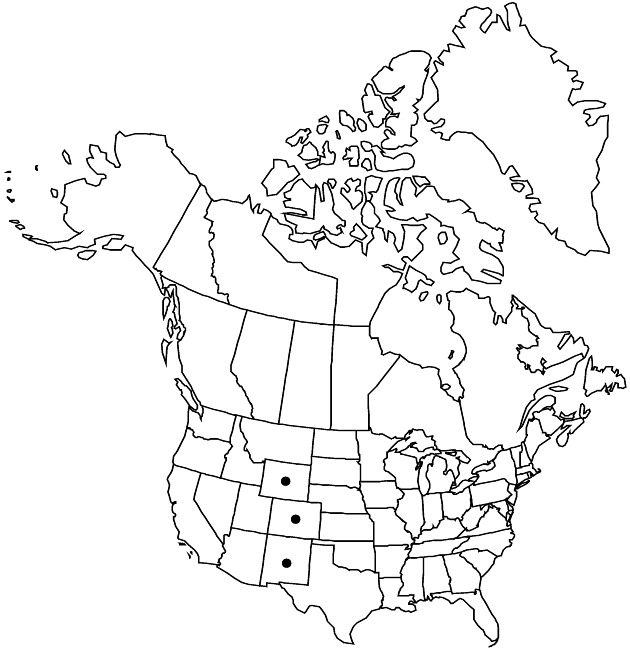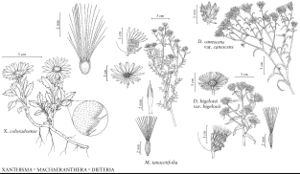Difference between revisions of "Dieteria bigelovii var. bigelovii"
FNA>Volume Importer |
FNA>Volume Importer |
||
| Line 43: | Line 43: | ||
|publication year= | |publication year= | ||
|special status= | |special status= | ||
| − | |source xml=https://jpend@bitbucket.org/aafc-mbb/fna-data-curation.git/src/ | + | |source xml=https://jpend@bitbucket.org/aafc-mbb/fna-data-curation.git/src/8f726806613d60c220dc4493de13607dd3150896/coarse_grained_fna_xml/V19-20-21/V20_906.xml |
|tribe=Asteraceae tribe Astereae | |tribe=Asteraceae tribe Astereae | ||
|genus=Dieteria | |genus=Dieteria | ||
Revision as of 15:27, 18 September 2019
Leaf blades lanceolate to oblanceolate, mid 20–80 × 6–15 mm, margins entire to irregularly dentate or serrate, faces glabrous or sparsely puberulent, often sparsely stipitate-glandular. Involucres broadly turbinate to hemispheric, 8–15 mm, widths 1–2(–3) times heights. Phyllaries 50–100, 1–2 mm wide (at midpoint), apices long-acuminate, 3–6 mm. Ray florets 30–60. 2n = 8.
Phenology: Flowering Jul–Oct.
Habitat: Meadows, open areas, subalpine coniferous forests, oak woodlands, grasslands, creosote bush or sagebrush scrublands, often along streams, roadsides
Elevation: 2300–3500 m
Distribution

Colo., N.Mex., Wyo.
Discussion
Variety bigelovii is found in the Rocky Mountains.
Selected References
None.
Lower Taxa
None.
